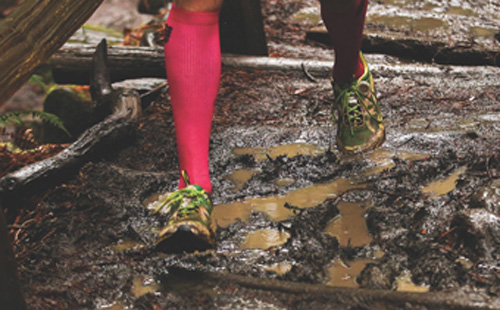 A recent study published in Footwear Science shows that the surface underfoot plays a major role in foot-strike determination. Results showed that only 20% of subjects landed on their midfoot or forefoot, on a soft surface. While on a hard surface the percent increased to 65%.
A recent study published in Footwear Science shows that the surface underfoot plays a major role in foot-strike determination. Results showed that only 20% of subjects landed on their midfoot or forefoot, on a soft surface. While on a hard surface the percent increased to 65%.
According to UMass running biomechanics group, a study they conducted also showed most test subjects switched to a mid- or forefoot strike on the hard surface when running on hard surface versus soft EVA foam like material. Researchers believe runners tend to be forefoot strikers due a mechanism to “reduce pain.”
The biomechanics of the foot, ankle, and lower leg are essential to understanding the proper functioning of the lower leg and foot. If you suspect a problem with your biomechanics and believe it is causing foot pain, ankle pain, or walking instability, it is recommended to see a podiatrist, like Howard Hyman of The Podiatry Center, P.C for immediate consultation, care, and treatment options.
Biomechanics in Podiatry
Podiatric biomechanics is a particular sector of specialty podiatry with licensed practitioners who are trained to diagnose and treat conditions affecting the foot, ankle and lower leg. Biomechanics deals with the forces that act against the body causing an interference with the biological structure and focuses on the movement of the ankle, the foot and the forces that interact with them.
A History of Biomechanics
- Biomechanics dates back to the BC era in Egypt where evidence of professional foot care has been recorded.
- In 1974 biomechanics gained a higher profile from the studies of Merton Root, who claimed that by changing or controlling the forces between the ankle and the foot, corrections or conditions could be implemented to gain strength and coordination to the area.
Modern technology improvements are based on past theories and therapeutic processes providing a better understanding of podiatry concepts for biomechanics. Computers provide accurate determinations about the forces, moments and patterns of the foot and lower legs with the most important information captured.
To learn more about biomechanics in podiatry please follow link below.
If you have any questions, please feel free to contact our office in Milburn NJ. We offer the newest diagnostic and treatment technologies for all your foot ankle injuries.
Read more on Biomechanics in Podiatry.
Connect With Us
